Hypotension or low blood pressure is usually not a worrisome condition. In fact, many feel it is keeps people safe from coronary heart ailments. But if there is frequent dizziness and fainting associated with low blood pressure, then it is important to maintain the normal levels. Regular practice of Asanas and Pranayama could help to normalize the blood pressure levels by restoring the functionality of sympathetic and parasympathetic nervous system. The Yoga for Low Blood Pressure series is a combination of postures, breathing and gestures that can help with low blood pressure management.
Yoga for Low Blood Pressure
The poses outlined here aims to relieve stress and calm the body and mind alike, while attempting to restore the levels of blood pressure. Feel free to do the poses as a series or separately.
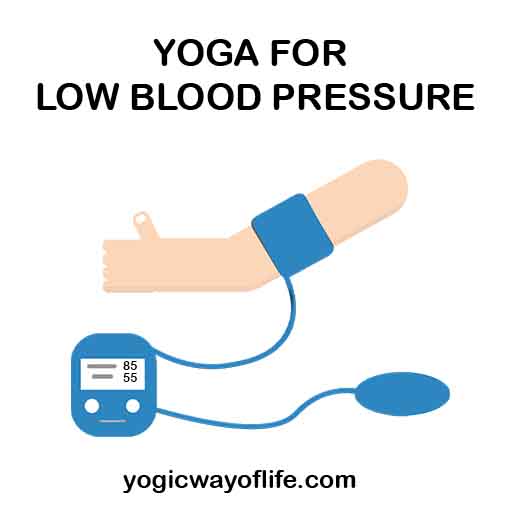
1. Paschimottanasana – Seated Forward Fold
The seated forward bend is the first pose in the Yoga for Low Blood Pressure series of postures. Sit down on the mat, maintaining a neutral, long spine. Stretch out the legs and flex the feet. Lift the flesh away from the buttocks to rest the sitting bones on the mat. Inhale and lift the arms up. Breathing out, fold forward from the hips, lengthening the spine in the process. Let the abdomen rest on the thighs while chest moves towards the shin. Grab the big toe using a three finger grip, thumbs resting on top of the big toe.
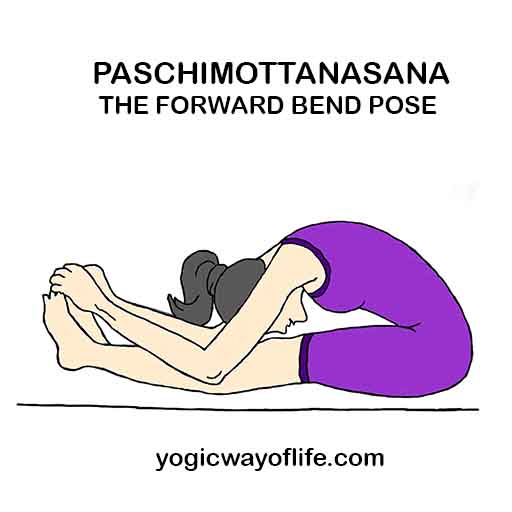
Inhale and elongate the spine. Exhale, bend the elbows to the sides, and deepen the forward fold. Hold the Asana for ten deep breaths. Inhale, release the toes, and straighten the torso.
2. Baddha Konasana – Cobbler Pose – Butterfly Pose
The next pose in the Yoga for Low Blood Pressure series is the butterfly pose. Sit down on the mat, legs stretched out, and palms resting on the thighs. Bend the knees outward, allowing the soles of the feet to touch each other. Lift the flesh from beneath the buttocks. Pressing the soles of the feet against each other, try to bring the knees close to the floor.
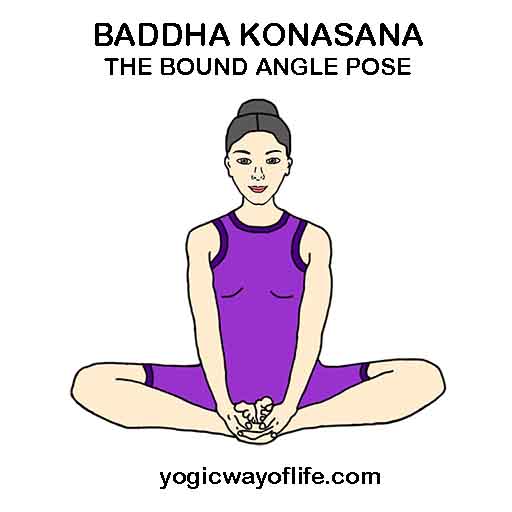
Inhale here and grab the feet from outside. While breathing out, fold forward, allowing the forehead to rest outside the toes. Let the tummy rest on the thighs and chest on the feet. Close the eyes and hold the Asana for the next ten breaths. Inhale and straighten the torso, after releasing the feet.
3. Siddhasana – The Accomplished Pose
Siddhasana is the third posture in the Yoga for Low Blood Pressure series of poses. Sit down on the mat, legs stretched out, and palms resting on the thighs. Bend the left knee and rest the left heel close to the right groin. Now take the right foot and place it over the left foot. If possible, slide the right toes between the left thigh and calves.
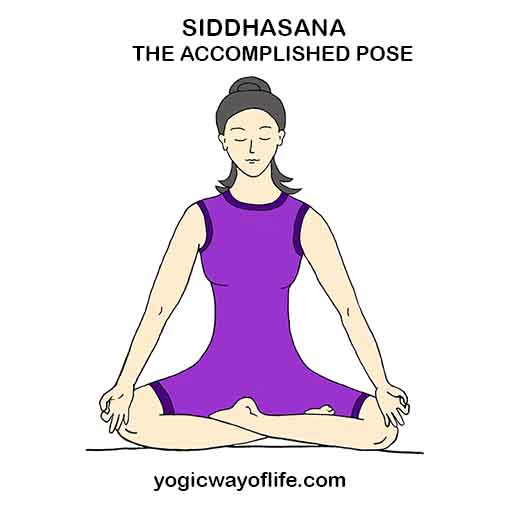
If the knees are resting in the air, use a block or cushion to support the knees. Alternatively, you can rest the right leg outside the left so that knees rest on the floor. Rest the palms on the knees. Elongate the spine and relax into the pose. Close the eyes and breathe deeply. Stay in the pose for the next 5 to 10 minutes.
4. Pawanamuktasana – Wind Relieving Pose
Lie down on the back, arms resting on either side of the body. Bend the knees and rest the feet as close to the buttocks as possible. Inhale and hug the knees to the chest. Entwine the legs with the arms. Rest the lower back on the floor and hug the knees deeper into the chest, pressing the thighs into the abdomen to trigger elimination of toxins.
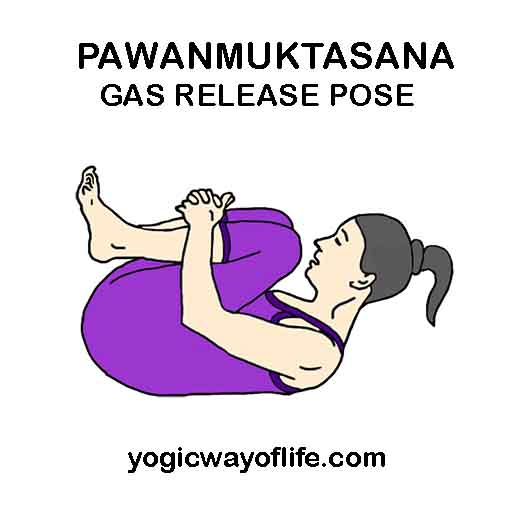
Hold the Asana, breathing deeply, in and out through the nose for the next ten to fifteen breaths. Exhale and release the legs. Stretch out the legs and relax for 10 breaths before repeating one more time.
5. Matsyasana – Fish Pose
Lie down on the mat with the back resting on the floor. Stretch out the legs. Rest the arms along the body. Inhale and push the chest up. Lift the head up and while breathing out, rest the crown of the head on the mat, stretching the throat. Rest the right palm on the chest and left palm on the abdomen.
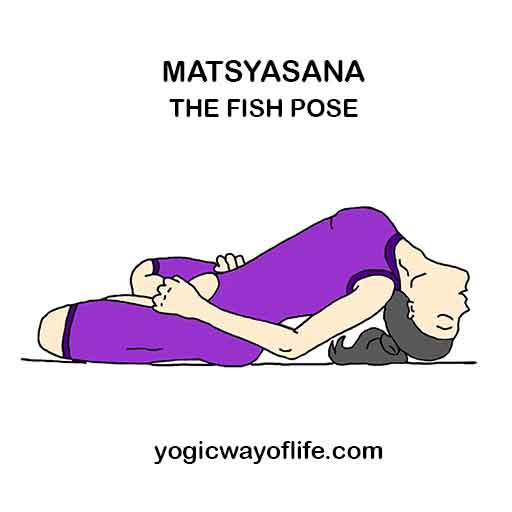
Close the eyes and hold the posture for ten to fifteen deep breaths. Allow the abdomen to rise with each breath that moves in. Let the tummy fall back and close to the spine while breathing out. Relax into the pose.
On the next inhale, gently lift the crown of the head up. Exhale and rest the head and chest on the floor.
7. Balasana – Child’s Pose
Balasana is the last posture in the Yoga for Low Blood Pressure series. Sit down in Vajrasana, the Kneeling Pose. Lengthen the spine and roll the shoulders back and away from the ears. Inhale and lift the arms to the ceiling. Breathing out, fold forward from the hips. Stretch the arms out and rest the palms on the mat.
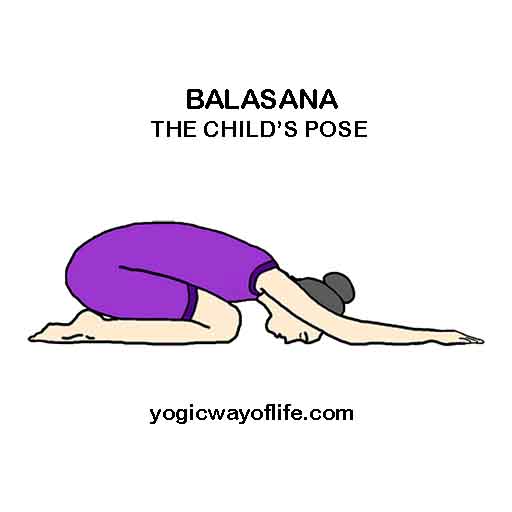
Let the abdomen rest on the thighs. Make a pillow with the palms and rest the forehead on it. Close the eyes and relax into the pose. Hold the Asana for the next ten to fifteen deep breaths.
Inhale and straighten the torso. Shift the body to one side, swing the legs, stretch them out, and relax.
8. Anulom Vilom Pranayama – Alternate Nostril Breathing
The alternate nostril breathing is also included in the series on Yoga for Low Blood Pressure. Sit down in a comfortable seated posture, maintaining a straight, neutral spine. Rest the left palm on the knee, shaping the fingers into Jnana mudra. Use the right thumb to close the right nostril. Rest the tips of the middle and index fingers between the eyebrows. Let the little finger point to the ceiling. Use the right ring finger to close the left nostril.
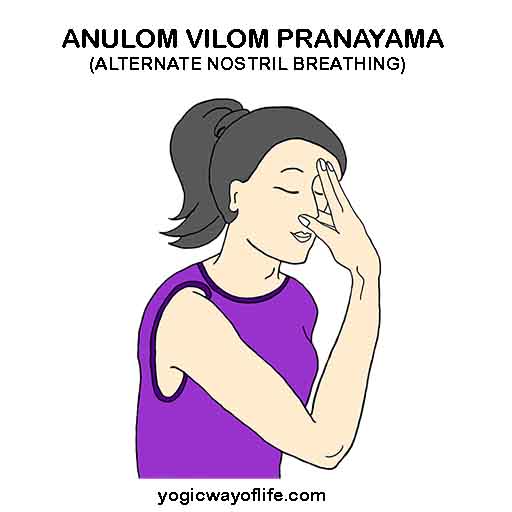
Take 10 deep breaths to relax the body and mind. This deep breathing practice will also allow the mind and body to get ready for the Pranayama practice. At the end of the tenth inhalation, close the right nostril. Exhale completely through the left nostril.
Inhale through the left one for a count of six and close it. Open the right nostril and exhale completely for a count of six. Inhale through the right for a count of six, close the right one, and exhale completely through the left. Practice 20 such repetitions.
9. Prithvi Mudra – Earth Mudra
The Yoga for Low Blood Pressure series also includes a Mudra or hand gesture. Sit in a comfortable seated pose, keeping the spine long and erect. Rest the palms on the knees. Shape the fingers into Prithvi Mudra. Allow the tips of the thumb and ring fingers to touch each other. Close the eyes and breathe normally. Practice the Mudra for 45 minutes. Alternatively, one can practice the Mudra for 15 minutes, thrice a day.
While yoga is a safe practice to normalize blood pressure levels, it is advisable to seek the permission of the doctor before beginning the practice. Also, refrain from practicing any of the poses if there are any other contraindications, including dizziness and fainting in extremities. Include yoga as a part of a balanced diet and exercise regimen. It is also important to take adequate rest to restore the natural levels of blood pressure. So, strike the balance and lead a healthy life.
